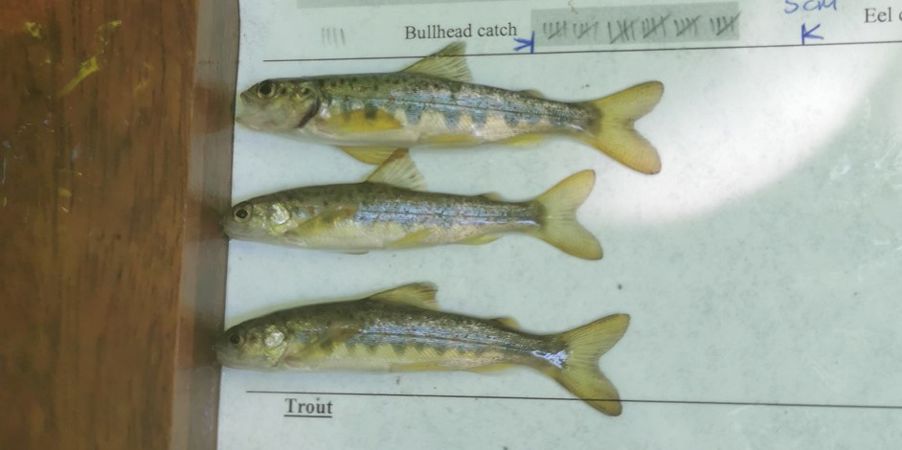River Dee barrier removal encourages salmon migration

Local salmon populations on the River Dee have been boosted thanks to the discovery of juvenile salmon at three sites above the location of a recently removed barrier.
The LIFE Dee River project removed Morlas Ford in September 2021 as it was a partial barrier to migratory fish. This is part of the project’s ongoing work to transform the River Dee and its catchment by restoring the river and its surroundings back to their natural state.
On Tuesday 10 August, NRW Officers completed electric fishing surveys at Morlas Brook which indicated that returning adult salmon had accessed the brook during the previous winter and successfully spawned above the location of the removal. Previous electric fishing surveys had showed that no salmon had spawned for at least three years prior to the ford’s removal.
Adult salmon return to their natal stream to spawn having spent time growing at sea. If their route is blocked by artificial structures, they can waste energy or sustain injuries attempting to pass and be more vulnerable to predators.
Morlas Ford was a structure originally built in the 1990s to provide access to the far bank of the river. Morlas Brook is a tributary of the Afon Ceiriog, itself a large tributary of the river Dee. The Afon Ceiriog forms part of the Special Area of Conservation (SAC), with salmon one of the primary reasons for selection of the site.
Joel Rees-Jones, LIFE Dee River Project Manager, said:
“By removing the ford, we have allowed returning adults to access good quality spawning grounds. The structure was only 60 metres from the confluence with the River Ceiriog, so it meant that virtually the whole of Morlas Brook was inaccessible in most years.
“On top of the removal of Morlas Ford, the LIFE Dee River project will also fully or partially remove another four weirs in the Dee and tributaries and install fish passage solutions in a further six weirs. This will improve access for fish in 88km of river benefiting a wide range of habitats and species.”
The LIFE Dee River project (LIFE18 NAT/UK/000743) is funded by the EU LIFE programme, Welsh Government, Environment Agency, Dŵr Cymru/Welsh Water and Snowdonia National Park Authority.
